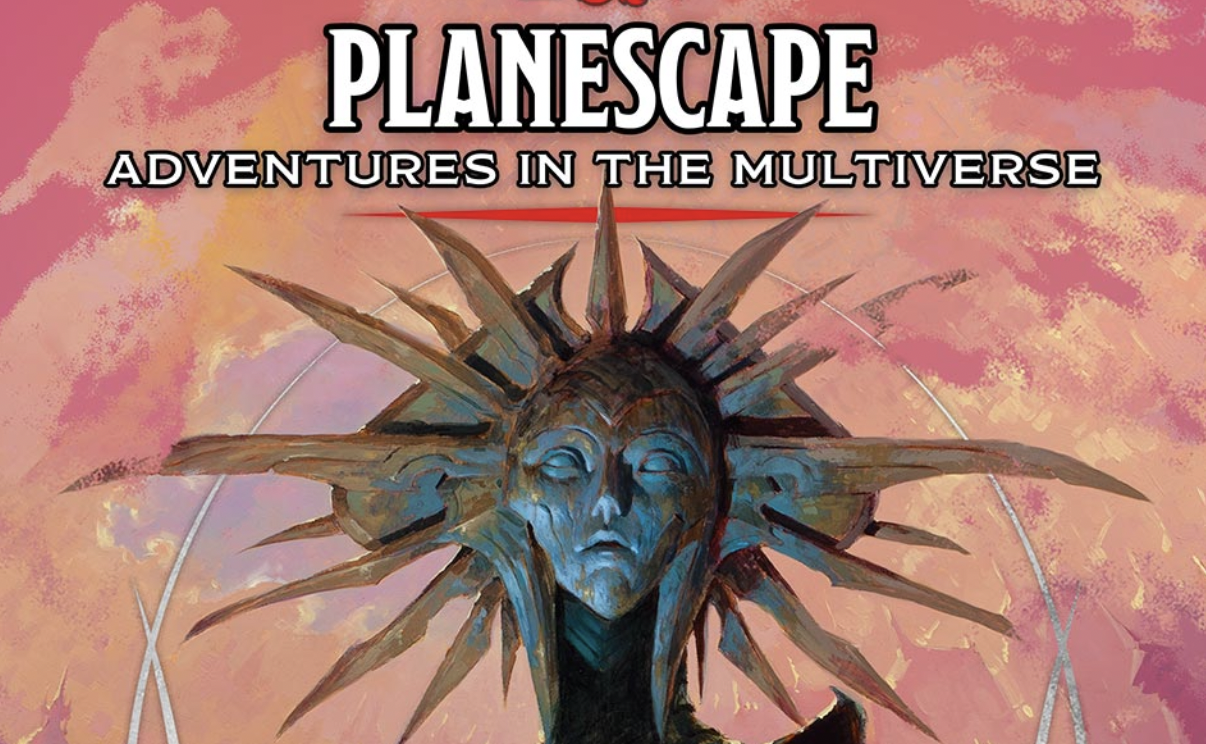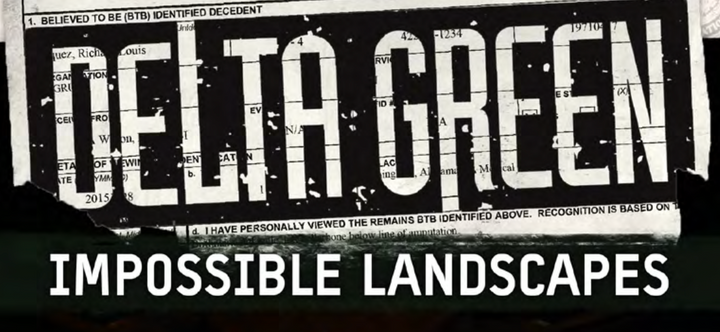Review: Turn of Fortune's Wheel (2023)
In which I, regrettably, give Hasbro money because they've published an update to one of my favorite RPG settings, Planescape.

I'm going to level with you: I play a lot of TTRPGs, but almost never D&D. Planescape is also one of my favorite RPG settings of all time. Both things can be true![[1]] Planescape: Torment is also one of the best RPGs—best video game in general—of all time. Certainly easily in a top-three or five. So when I saw that Wizards was reprinting a Planescape box set with a new campaign inspired by that CRPG, the part of me that needed to see it went straight to DEFCON 5—all out war with my wallet, which did not want to give money to Hasbro.
My wallet lost. So the least I can do is bring you a review.
A thing I learned here is that the "digital" versions of D&D products are just webpages that are like wiki entries on D&D Beyond. TIL! This is an interesting choice! In many ways, it is strictly worse than a proper ebook/PDF, but in some ways it's nice to have hyperlinks and popovers that don't suck, I guess?
I will say, though, that it is very annoying when those popovers just tell me to construct additional pylons insert more $20s in order to acquire more digital "books". On balance, I'd prefer a PDF.
The Setting Book
Anyhow, I skimmed the new Sigil / Planescape reference book and it's fine. It's 96 pages, so it's really more like an outline of the setting—kinda like the original box set! They changed up a few of the factions, which is good; those needed a bit of a freshening up. They include maps for a few parts of a few of the faction HQs. Their mapping remains wack, IMO. They generally show a picture of a truly massive edifice and then give you a handful of maps for I guess a part of it that are pretty but not super functional. Like—what are we to make of an entire page that looks like the attached? OK... yes, this prison has a tower. Those are sure some floors of a tower! You got any plot hooks here or something? Ah, you have a table of inmates one might find in a tower :). It's even a d10 table! Roll for Inmate!

It's just a wee 96 page gazetteer but man I feel like there should be... I dunno, something more here. Maybe pull the maps into a folio of maps; give some coverage to every faction HQ, that sort of thing?
The Planes themselves never really get brought up—no doubt holding space for a "if-the-product-does-well-here's-the-second-wave" supplement. Fine, but slim pickings for GMs that don't already have the 2nd edition material!
As an aside: what is the deal with d4 and d6 tables of random encounters? Surely a list is fine! Many of these tables are kinda padded out to be conveniently dice-shaped.
Rota Fortuna
Hopefully this is all spoiler-free enough; I think so.
I read the 96 page campaign. It borrows less from Torment than I thought—really just the beginning. There are a couple easter eggs for the Torment aficionado; it is clearly set before the events of the video game—Morte[[2]] greets the PCs and indicates he's "waiting for someone else" to show up in The Mortuary, and there are a couple of random side encounters in Sigil that are pre-Torment easter eggs. But! There are also a bunch of easter eggs and references that clearly indicate that the setting is after the events of Great Modron March => Dead Gods => Faction War (faction realignment in the setting guide being one such clue)[[3]]. The campaign in fact gets into a bit of the "Great Modron March" backstory but curiously doesn't really do anything with any of the plots or events from that trilogy other than name-checking some things for the old heads. So the chronology is wack, but hey, I suppose I don't mind—the multiverse is a weird place. I wonder if it's weird if you don't know the old setting or video game? As for the campaign itself, there are some really good things in there. Seriously: really good things! The setups are delicious, the follow through is suspect, and the payoff shaky at best. As a box set campaign to introduce the setting, the structure is solid: Welcome to Sigil => Discover a Weird Old Problem => Travel the Outlands => Return to Sigil to Face The Problem. The Weird Old Problem is a set of glitches happening in The Matrix the multiverse, the specifics of which are neat. It is a great setup. The NPCs they meet in Sigil are great on the surface, even if I have no idea what all these different creature types are! Everything mentioned needs a lot more meat: the glitches, the villains, the backstory... everything is thin. When you get right down to it, the antagonists here don't really have a plan and all the talk about how cunningly layered Planescape plots are sort of falls apart. There's some really cool stuff in the last act which I think is supposed to distract players from that.
The other thing they like to do is spend a lot of time on tactical maps that don't seem to need to be tactical maps. Like, they have a big castle thing that the PCs encounter early in Act 2 and give it a set of tactical maps that make it feel very small. Likewise for the supposedly quite epic final encounter. The maps appear almost useless. They are very pretty, though! The book is very big on letting the user know how tall the ceilings are in every interior space—one must assume there is some D&D-rules-related reason for that.
The activity that the players are doing in the outlands throughout act 2 makes sense on the surface and I like it with an asterisk. It doesn't really get tied back into any Nefarious Plans or overarching plot mostly because those barely exist here and are mostly handwavy (JJ Abrams!!). At best there's a twist—but it's not a good one[[4]]. How the players travel the outlands is straight outta a Final Fantasy game and I like it. There are only two "so you're traveling the planes" encounters, which is too few—the party is supposed to visit 7 locations. All this travel would be a perfect time to introduce some more B-plot to pay off some themes. One of the two optional encounters does this well, but the book simply doesn't have room for enough B-roll.
Act 3, The Return To Sigil To Face The Problem starts strong but I don't really think it comes together into anything other than a reason to discover a big bad, fight them, and then do some stuff that I guess is an epic encounter to "fix" the weird glitchy problems. It's an epic encounter, alright, but it doesn't really explain what was going on, what the villain thought they were trying to do here, or even why this particular encounter set fixes anything. It is a hop, skip, and a jump away from those things, though! A cagey GM will have no trouble reworking this material into something that sings.
And hey, I would rewrite most of the background and villains here anyway. I rarely let those things stand as written! I will absolutely work large chunks of this into my long-planned Planescape campaign. There's some really neat ideas here, and I think more than anything it just shows that 96 pages isn't really enough space to fill out an epic campaign that is trying to do a bunch of stuff:
- General Planescape fuckery
- Get characters from level 3 to 17
- Tour the multiverse, or at least the outlands
- Have an intricately layered plot with believable and cool NPCs
If you're up for doing real work to build on what's here, I think this is a good start!
Conclusions?
It's hard to know how well this truly serves as an intro to The Planes and Planescape as a setting, because I do know much from the 2nd edition books already. It's like the original box set in that it is three slim volumes—a 96 page setting overview, a mostly not-great bestiary, and then the 96 page campaign. It's not going to be a "bible" in the sense that it doesn't have room to go into much detail about all the places. But! It does have a blog-post length write up of key places in Sigil and the Outlands, and a handful of locations within them. If you wanted to run your own Planescape campaign with this you'd be inventing a lot of stuff yourself, or relying on more detailed information from 2e books. Which is probably fine if you're a "just give me the outline, we'll figure stuff out along the way" sort of GM. But if you were looking to feature one of these places heavily—or even decide you want to know about, say, The Blood War or what various Planes are like—then you're not going to find that information here.
Each of these books could easily have been twice as large.
But I think that as an introduction to a setting, this is pretty decent. Personally I would have scrapped the bestiary—could have included those details in half the space in the relevant books, and beefed up the size of those other two volumes to make them feel a little more "complete."
I give it a B, for being Planescapey and having a "good ideas, mediocre execution" adventure that I will love fixing.
[[1]]: I run the setting with other systems. Monte Cook's Cypher System is perfect for the setting. Absolutely perfect!
[[2]]: A pivotal NPC from the video game; also the first character the player meets therein.
[[3]]: These are pivotal "big campaign arc" books from the original 2nd edition material. Faction War brought the original setting lore to a close and raised the prospect of a realigned set of factions in Sigil.
[[4]]: SPOILER! WARNING! The twist is that they didn't really need to do any of the stuff in Act 2; the villain just sort of hoped they'd die while doing it.



Comments ()